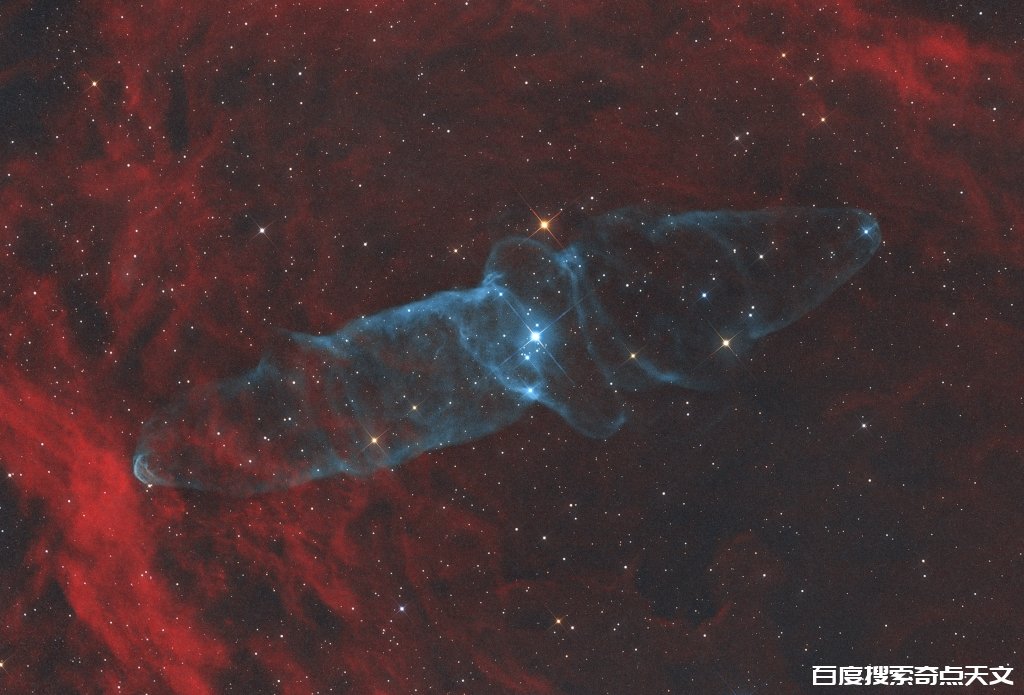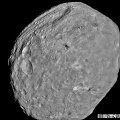
Ou4:巨乌贼星云

Ou4: The Giant Squid Nebula
Image Credit & Copyright: Tommy Lease
Explanation: A mysterious squid-like cosmic cloud, this nebula is very faint, but also very large in planet Earth’s sky. In the image, composed with 30 hours of narrowband image data, it spans nearly three full moons toward the royal constellation Cepheus. Discovered in 2011 by French astro-imager Nicolas Outters, the Squid Nebula’s bipolar shape is distinguished here by the telltale blue-green emission from doubly ionized oxygen atoms. Though apparently surrounded by the reddish hydrogen emission region Sh2-129, the true distance and nature of the Squid Nebula have been difficult to determine. Still, a more recent investigation suggests Ou4 really does lie within Sh2-129 some 2,300 light-years away. Consistent with that scenario, the cosmic squid would represent a spectacular outflow of material driven by a triple system of hot, massive stars, cataloged as HR8119, seen near the center of the nebula. If so, this truly giant squid nebula would physically be over 50 light-years across.
Tomorrow’s picture: dust shells in space
Ou4:巨乌贼星云
影像提供与版权: Tommy Lease
说明: 地球的天空中,有这团庞大神秘的暗淡乌贼状星云。而上面这幅涵盖了仙王座方向将近3个满月天区的影像,即是建构自总曝光时间长达30小时的窄波段影像数据。在这张影像里,由法国天文摄影师奥特斯发现于2011年的乌贼星云(Ou4),其双极瓣结构,因影像所记录的特征性双电离氧原子蓝绿辐射而清晰可辨。而乌贼星云虽然外面看似包覆着泛红的氢辐射区Sh2-129,然而其真实距离及本质至今仍难以确认。不过,不久前的一项研究指出,Ou4的确是在距离约2,300光年远的发射星云SH2-129之内。在此情况下,这尾宇宙级的乌贼,可能是从一个炽热大质量的三合星系统(编录号HR8119)外泛的大片物质。如此为真,庞大的乌贼星云之身宽超过50光年。
明日的图片: dust shells in space


